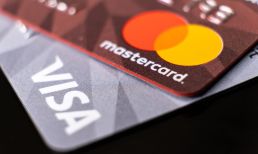The past several months have been largely defined in the retail world by merchants and brands making quick digital pivots to stay afloat in an environment that’s gone from “digital sometimes” to “digital mostly.”
It’s certainly been a tumultuous period, Anthony Eisen, co-founder and CEO of buy now, pay later (BNPL) firm Afterpay, told Karen Webster in a recent discussion on what’s next for retail and what a recovery might look like.
Eisen said that in many ways, the most remarkable thing is how retailers of all sizes have proven themselves capable of making massive changes nearly instantly, even amid government-mandated lockdowns. When selling online became the only game in town, retailers across the board got very seriously digital overnight.
“It wasn’t just about the normal stuff around how to do more advertising or promotion, or to focus on different things,” he said. “There were a lot [of] major changes involved, logistically and structurally, for many businesses. In the last 12 weeks, we’ve seen an acceleration to digital that was probably two or three or maybe four years in the making. It really has been a seismic shift.”
For example, Afterpay saw around one million customers sign up between March 1 and March 15, and scores of new merchants joining the platform globally. Eisen said consumers still want to be able to shop and pay with flexibility, but are wary of credit opportunities that run the risk of turning into what he describes as debt traps. As for retailers, he said they’re looking for new ways to meet customers where they are and to offer better value-added services — like BNPL — to draw them in.
Consumers Want More Than Toilet Paper (But Not More Credit Card Debt)
Advertisement: Scroll to Continue
Eisen said that in the pandemic’s first few weeks, consumers’ shopping habits contracted to essential items, to the exclusion of almost everything else. But now that consumers have all of the toilet paper, hand sanitizer and disinfectant spray they could possibly need for months, they’re starting to expand their acquisitions.
“Things like apparel … were initially depressed, [but] we have seen them come back very strongly,” he said. “Obviously some things like ticketing and travel still remain depressed, but we’ve seen somewhat of an overcompensation by the other categories that are generally represented on our platform.”
Consumers have not forsworn shopping in the face of uncertainty as some market watchers believe, Eisen said. However, they’ve gotten even more suspicious about revolving credit accounts that let them build up debt over time.
But that’s not exactly a new trend, he noted. He added that Afterpay — which lets consumers finance things with four installment payments, with no interest or fees — launched in the wake of the Great Recession, with an eye toward millennials who have distinctly less appetite for traditional credit products.
Eisen added that since the Great Recession, credit card use has declined and debit card use has increased. “We’ve seen COVID-19 accelerating a theme that’s been in place now for 10 years or so, which is a move away from traditional credit among younger consumers because they think it’s not good for them,” he said.
Add in a pandemic, and Afterpay is already seeing millennials questioning what their economic futures look like and rethinking how they’ll pay for the things they want to buy.
And not necessarily just the millennials. What’s been a bit more unexpected is how quickly the appeal of Afterpay’s payment method has spread to other demographic groups during the pandemic, Eisen said. Although Afterpay was built for millennials, older consumers are now signing on as they get into the swing of online shopping and the appeal of structured monthly payments to pay for their purchases.
What The Future Looks Like
Eisen believes that brick-and-mortar stores will eventually reopen and consumers will return, but that some conversions to digital will be permanent.
That will be a challenge for some retailers. After all, the internet is a big place full of merchants, so standing out and bringing shoppers to their digital doorsteps will be difficult. Customer acquisition and lead generation are now more important than before, something Eisen said is built into the Afterpay program for merchants.
“We absolutely provide a service in terms of what [Afterpay] does and what it provides to consumers, and that’s hugely valued,” the executive said. “But at the same time, the platform we’ve built and the brands we’re associated with means we can act as a very effective funnel for our retail partners.”
Eisen said retailers can showcase their brands and their products on the Afterpay site to an audience that’s already very large — and is getting larger by the week. He said the site aims to promote loyal customers to use the service again, and also serves as “a really strong source of new customers” for the participating retailers.
“On average, our partners report to us that 40+ percent of Afterpay users are new to their site,” Eisen said.
Afterpay plans to carry on that matchmaking between retailer and consumer through the recovery and beyond, even after brick-and-mortar shops are up and running again.
“The whole point is to be able to offer a ubiquitous service to the customer wherever they happen to be, either in a store or online,” Eisen said.




